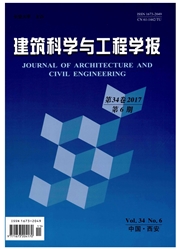

 中文摘要:
中文摘要:
通过分析工程结构用纤维增强塑料(FRP)筋的组成和物理力学性能特点,对比FRP筋性能和钢筋性能的不同之处,指出了FRP筋在工程结构中的适用性和应用前景。通过试验研究,分析了局部弯折对芳纶纤维增强塑料(AFRP)筋极限抗拉强度、加载速率和加载历史对编织型芳纶纤维筋(FiBRA)型AFRP筋弹性模量。以及应力水平对FiBRA型AFRP筋松弛率的影响,建立了规格为FAll的FiBRA型AFRP筋的松弛率计算公式。结果表明,局部弯折可能导致FRP筋的极限抗拉强度下降,FiBRA型AFRP筋编织状的成型特征造成其弹性模量在张拉过程申是渐趋稳定的,并且造成其总松弛量较大,工程应用时需充分考虑这些因素。
 英文摘要:
英文摘要:
Through analyzing the composition and physics mechanics performance characteristic of FRP tendons, the difference between FRP tendon and steel tendon was compared, the applicability and the future of FRP tendon in engineering structure were pointed out. Through experiments study, the effects of local bending to ultimate tensile strength, loading velocity rate and process to elastic modulus of FiBRA style AFRP tendons were analyzed, and stress levels to relaxation of FiBRA style FRP tendons were researched, and the formulas for calculating the relaxation rate of FAll, one spec of FiBRA tendon, were obtained. The results show that local bending may reduce the ultimate strength of FRP tendons, and the weave of FiBRA style AFRP tendon leads that the elastic modulus can only stabilize gradually and the total relaxation is more. These shortcomings should be noticed cautiously in practice.
 同期刊论文项目
同期刊论文项目
 同项目期刊论文
同项目期刊论文
 期刊信息
期刊信息
